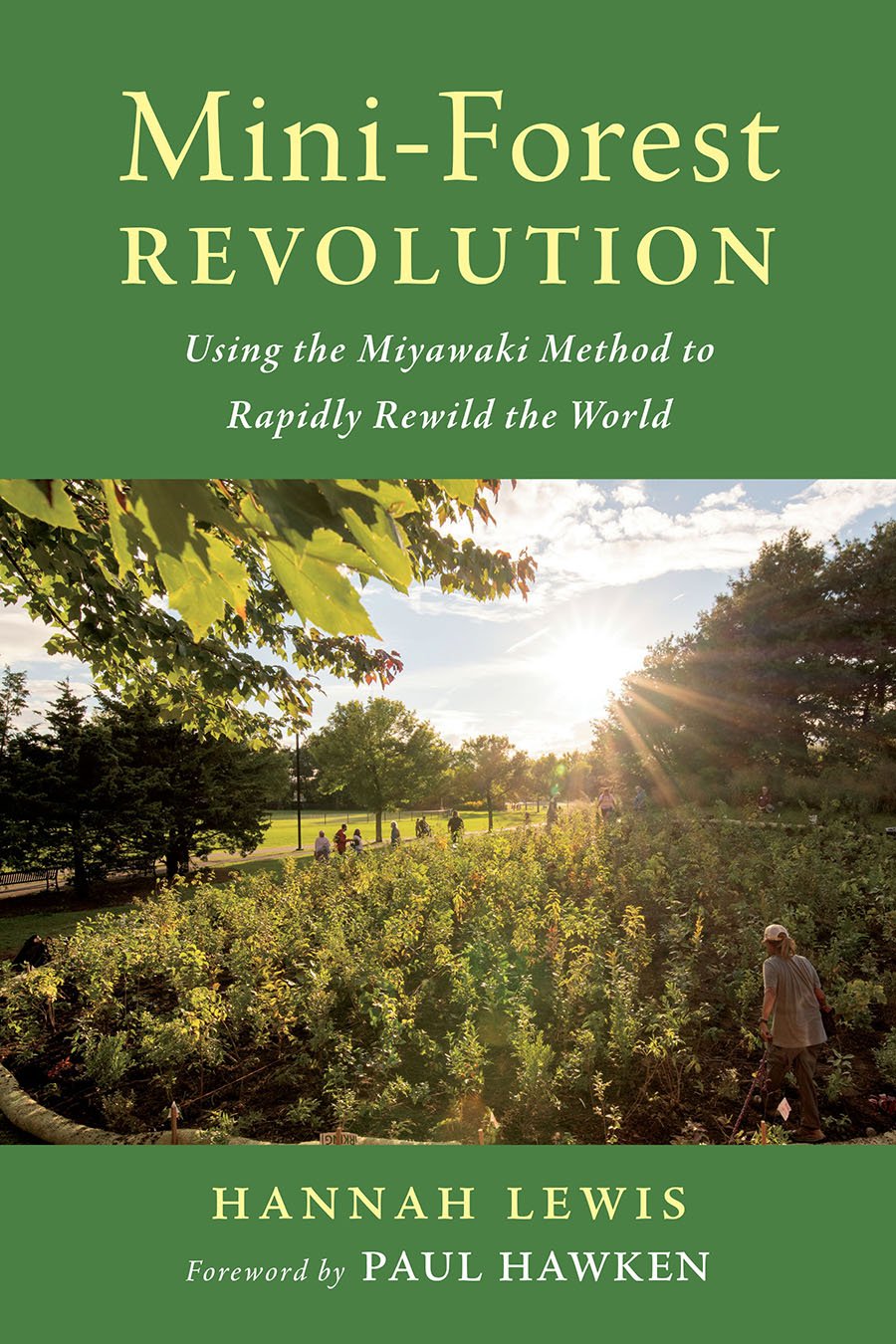Mini-Forest Revolution by Hannah Lewis
The group met in March to discuss this inspiring approach to quickly reforesting small areas.
Chelsea Green Publishing, 2022, www.chelseagreen.com.
The Sustainability Book Club met on March 2 to discuss Mini-Forest Revolution: Using the Miyawaki Method to Rapidly Rewild the World by Hannah Lewis. This book describes a unique approach to planting beneficial forests in spaces as small as six parking spaces. Devised by Japanese botanist Akira Miyawaki in the 1970s, this reforestation method speeds up the process of natural ecological succession through soil preparation and the planting of native climax species. The resulting “mini-forests” reach maturity much faster than new forests planted by conventional methods and they feature more biodiversity.
Miyawaki’s approach has been tested all over the world. In the book, Lewis presents case studies as varied as a mini-forest lining the perimeter of a dairy farm in the Iranian desert to mini-forest strips of 22,000 native trees and shrubs planted at an automotive-parts plant in Indiana. The author explains the importance of forested areas like these, as they can reduce air and noise pollution, absorb water and prevent soil erosion, sequester carbon, cool urban heat islands, provide wildlife corridors, become community gathering places and more.
Bread Riot’s Sustainability Book Club members discussed the native species found in our area and the various steps of the process (see below). One of the most important steps is good ground preparation, as is the involvement of people in planning, planting and care of the forest. Members also discussed possible local sites for a mini-forest, especially Rowan County’s property at West End Plaza/the old Salisbury Mall, which is slated for the county’s agriculture-related departments.
Steps to Planting a Mini-Forest, detailed in the book’s “Mini-Forest Field Guide”
Form a team that includes people with different areas of expertise, secure appropriate funding, and find a site for your project.
Make a list of the tree and shrub species you’ll include, how many, and where you can source them.
Prepare the soil by digging and loosening it with large equipment and then adding organic material and other amendments.
Plant the saplings in a celebratory, community-oriented event. Space the young trees about 2 feet apart, with a density of three trees per square yard. Spread mulch around them evenly.
Maintain the mini-forest, watering and weeding it for the first three years until the roots are established. Do not thin, prune or treat with pesticides or fertilizer.
If you have ideas for planting a mini-forest in Salisbury or Rowan County, let us know!
The Sustainability Book Club
Join a group of avid readers who meet monthly to engage in lively discussions focused on books about sustainability. The club meets at 6:30 p.m. on the first Thursday of every month on Zoom. Contact us to join!
April 6: Saving the Wild South: The Fight for Native Plants on the Brink of Extinction by Georgann Eubanks
May 4: Fen, Bog and Swamp: A Short History of Peatland Destruction and Its Role in the Climate Crisis by Annie Proulx

